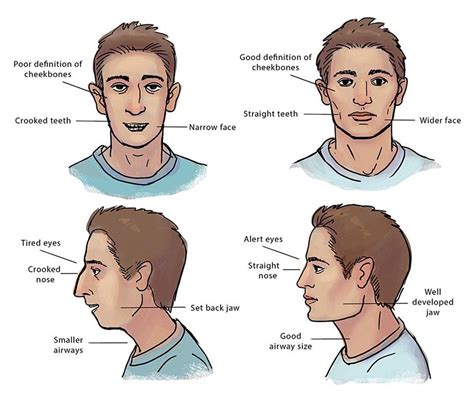How Airway, Jaw Development, and Tongue Posture Shape Lifelong Healthspan
Nov 02, 2025
Orthodontics, Airway Health, and Craniofacial Development: The Shift Toward Functional, Whole-Body Dentistry
For decades, orthodontics has focused primarily on straightening teeth to improve cosmetic appearance and bite alignment. While dental alignment remains important, newer research in airway-centered dentistry, craniofacial growth, sleep medicine, and myofunctional science is expanding how we understand orthodontic care.
Teeth do not exist in isolation.
They are part of a breathing system, a postural system, and a neuromuscular system.
How a jaw grows—and how the tongue, airway, and nervous system function—may influence far more than how a smile looks.
Today’s more holistic and functional orthodontic models recognize that airway health, facial growth, tongue posture, and breathing mechanics form the foundation for long-term oral stability and overall well-being.
1. Traditional Extraction-Based Orthodontics: A Limited Approach
Historically, many orthodontic treatments involved removing four premolars early in treatment and later third molars (wisdom teeth) to “make space” in a narrow jaw.
However, this approach may:
-
Reduce maxillary and mandibular arch volume
-
Limit tongue space
-
Increase likelihood of mouth breathing
-
Narrow the airway
-
Restrict nasal breathing capacity
A smaller oral cavity does not simply affect tooth alignment — it may influence airflow, sleep quality, posture, and cranial mechanics.

Important clarification:
Extractions still have a place in medically indicated cases. But the modern shift is toward expansion and jaw development first—not removal of healthy teeth.
2. Airway Health as the Structural Foundation
A growing body of research suggests that nasal breathing and proper tongue posture are essential for normal facial development.
Key developmental principles:
| Function | Structural Outcome |
|---|---|
| Tongue resting on palate | Stimulates jaw widening and midface growth |
| Nasal breathing | Supports healthy airway and facial symmetry |
| Chewing firm foods | Strengthens orofacial musculature and bone growth |
| Closed-mouth posture | Supports neuromuscular stability |
When these patterns are disrupted—especially in early childhood—compensations may emerge:
-
Narrow palate
-
High palate (reduced nasal cavity volume)
-
Forward head posture
-
Mouth breathing
-
Increased risk of sleep-disordered breathing (UARS, snoring, OSA)

This is why airway-centered orthodontics often begins with evaluating breathing before evaluating teeth.
3. Orofacial Myofunctional Disorders: When Function Drives Form
Orofacial Myofunctional Disorders (OMDs) involve atypical patterns in:
-
Tongue resting position
-
Swallowing mechanics
-
Lip seal
-
Breathing patterns
These functional patterns can cascade into structural changes:
| Dysfunction | Possible Outcomes |
|---|---|
| Low tongue posture | Narrowed palate, underdeveloped midface |
| Mouth breathing | Forward head posture, neck tension |
| Atypical swallowing | TMJ strain, jaw imbalance |
| Poor oral tone | Malocclusion, clenching, bruxism |
| Restricted airway | Snoring, poor sleep quality |
| Sleep disruption | Fatigue, irritability, cognitive fog |
| Autonomic dysregulation | Sympathetic dominance, anxiety-like symptoms |

Correcting function is therefore central to creating lasting structural stability.
4. Wisdom Teeth: Space, Structure, and Regenerative Value
Wisdom teeth have historically been viewed as “unnecessary.”
But two critical insights are reshaping this narrative:
A. They often only become problematic when the jaw is underdeveloped.
If the palate and mandible are developed naturally and wide enough, wisdom teeth may erupt without issue.
B. Wisdom teeth contain dental pulp stem cells (DPSCs).
These are now being studied for regenerative applications in:
-
Neurological repair
-
Bone and tissue regeneration
-
Orthopedic healing
This has led to a more conservative, case-by-case approach to extraction.
5. Functional and Airway-Centered Orthodontics: What It Looks Like
Modern, functional orthodontic care often includes:
✅ Airway imaging and sleep screening
✅ Palatal expansion (especially early in development)
✅ Tongue posture and nasal breathing training
✅ Myofunctional therapy
✅ Collaboration with physiotherapists, osteopaths, ENTs, or sleep physicians
✅ Preservation of healthy teeth whenever possible
✅ Focus on long-term stability without lifelong retention devices
The goal is not just straight teeth — but:
-
A healthy airway
-
A functional tongue posture
-
Stable sleep physiology
-
Balanced neuromuscular control
-
And a structurally supported nervous system
6. Rethinking Retainers
If breath mechanics and tongue posture remain dysfunctional, the teeth may attempt to return to their previous pattern—requiring lifelong retention.
However, when:
-
Jaw structure is expanded
-
Breathing patterns normalize
-
Tongue posture stabilizes
Teeth often stay aligned without relying on permanent retainers, because function supports form.
Conclusion: Orthodontics Is Evolving
The future of orthodontics is interdisciplinary.
It does not treat teeth as isolated structures—but as part of a living, breathing, postural, neurological system.
The emerging model prioritizes:
-
Airway-first assessment
-
Functional breathing patterns
-
Myofunctional training
-
Jaw growth support
-
Preservation of biological structures
-
Sleep and neurological regulation
Straight teeth are not the goal.
A healthy, integrated, resilient body is the goal — and straight teeth become the result.
